Welcome to a detailed tactical analysis of the captivating clash between Manchester City and Arsenal. In this article, we dissect the strategic intricacies that unfolded on the pitch, exploring the formations, player movements, and tactical maneuvers employed by both teams. The encounter between these two footballing giants offers a fascinating insight into the strategic approaches of top-tier clubs in the Premier League. Join us as we delve into the tactical dynamics of Manchester City vs Arsenal, unraveling the strategic decisions that shaped the outcome of this thrilling match.
Man City
Low Build-up
In the low build-up, Man City used a 3-4-3-1 formation, with the goalkeeper acting as a center-back. This meant that they were numerically superior in the midfield, often allowing them to win the second balls when Arsenal’s high press forced them to go long. From there, Pep Guardiola’s team would recycle the ball and begin with high build-up.
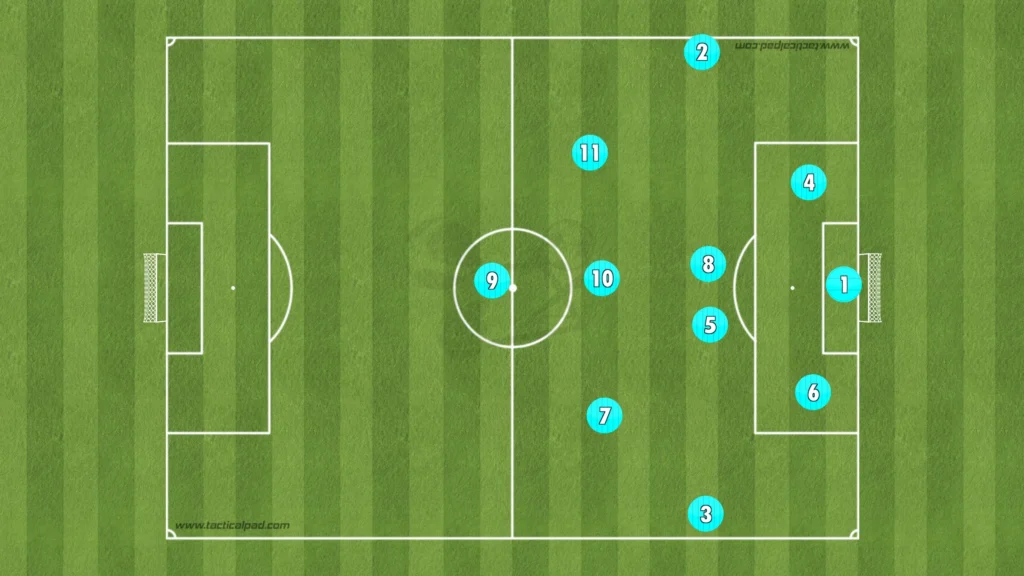
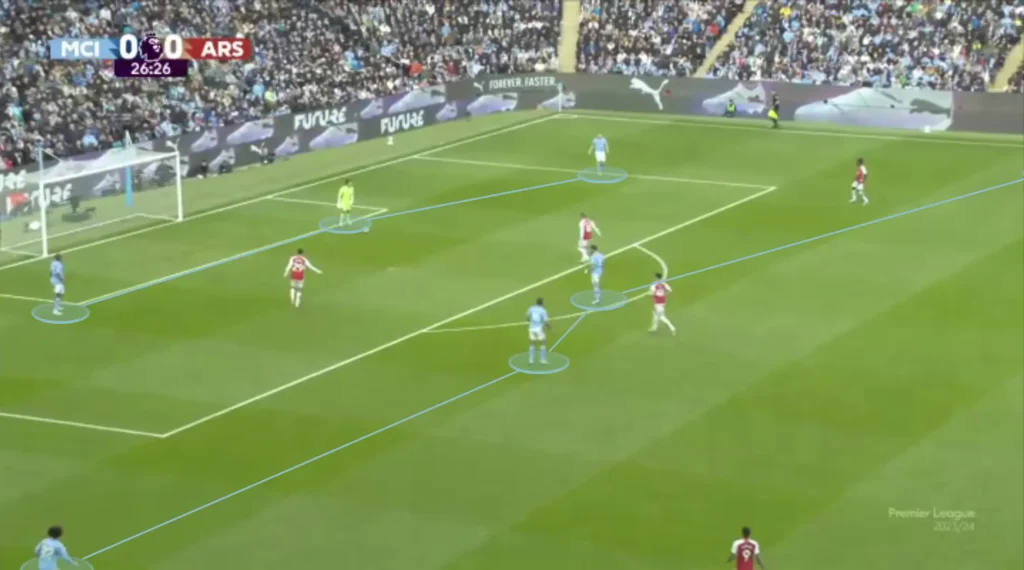
Pep Guardiola switched positions on Kovacic and Aké during the low build-up. Kovacic dropped into the backline while Aké came into the midfield. Man City played through Kovacic a lot in the low build-up, using him to find ways of beating Arsenal’s press.
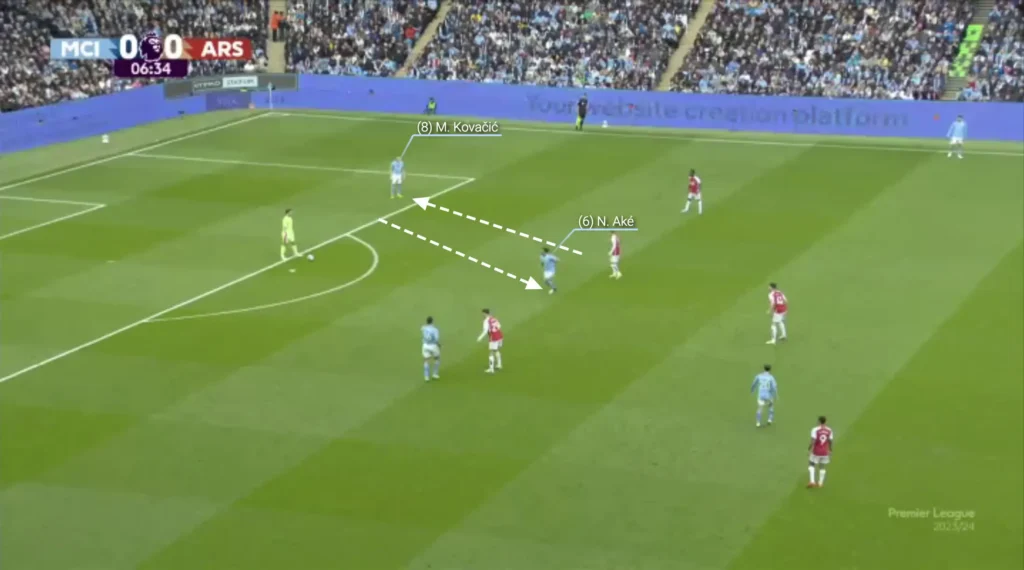
Later when Aké was subbed off, Dias would take his place in the low build-up.
High Build-up
In the high build-up, Man City would rotate into a 1-2-5-3 formation, pushing the fullbacks up, dropping with Bernardo Silva, and positioning Foden and De Bruyne between the backline and midfield-line of Arsenal. They dominated possession, using patience to slowly break down Arsenal.
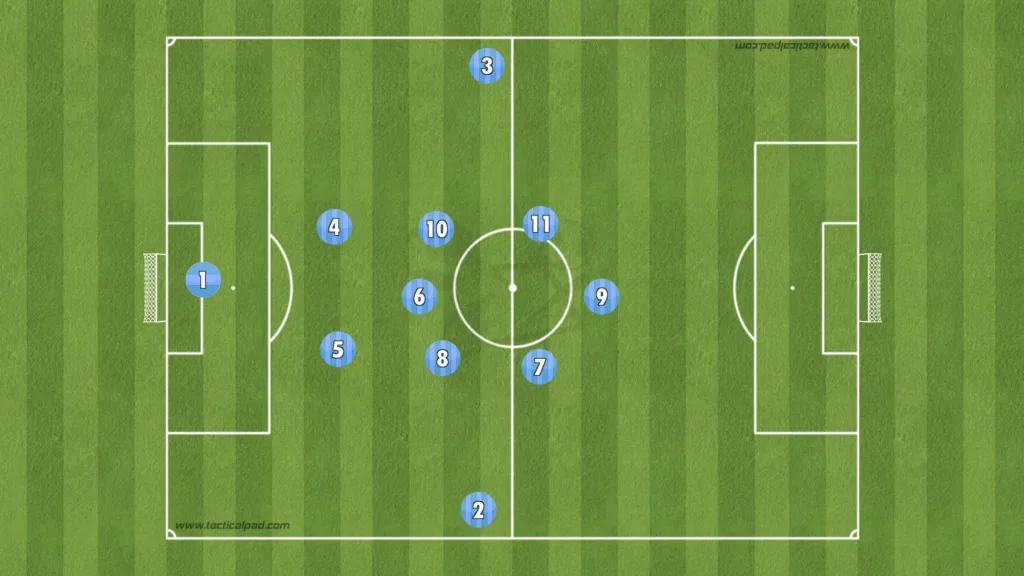
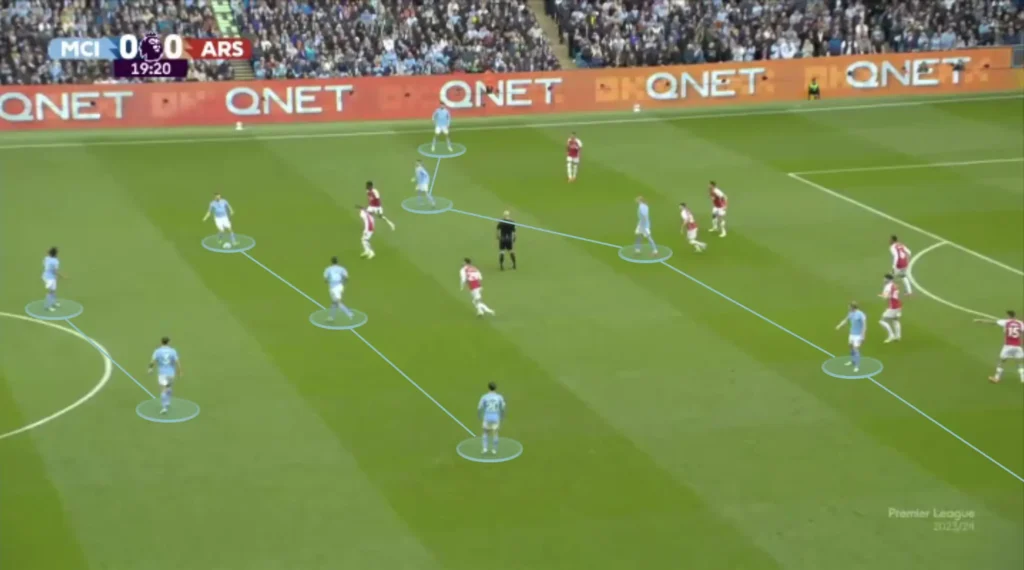
Like in the low build-up, Kovicic often dropped down into the backline. When this happened, Bernardo Silva would push up next to Foden and De Bruyne, which created a 1-3-1-5-1 formation. This created a 3v2 with the City backline against Arsenal’s two forwards, which made it easier for them to get past Arsenal’s first line.
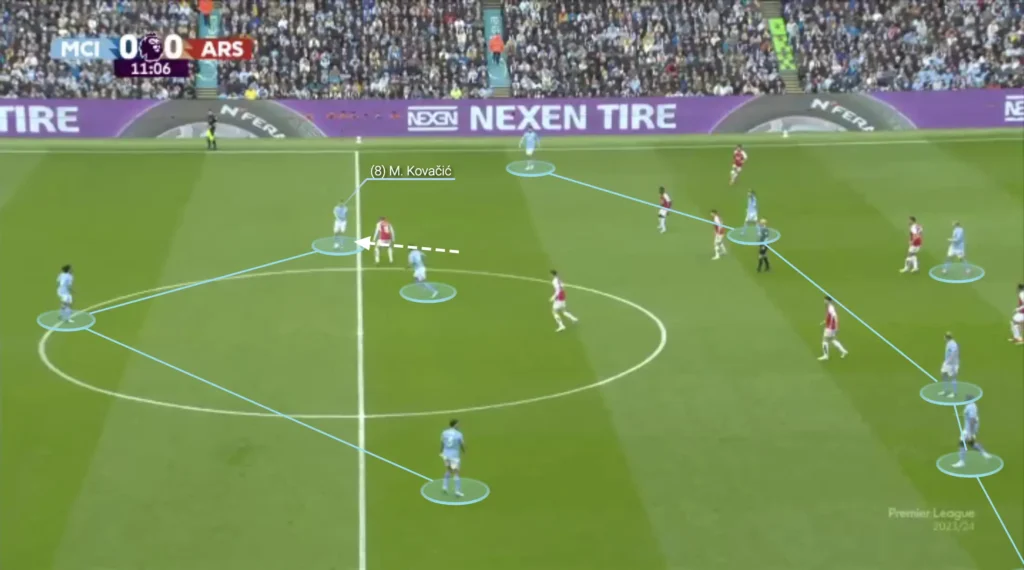
Man City made sure to keep a very high backline. This helped in the counterpress because they got more players closer to the center. Having more players close to the center who can win the ball back makes it difficult for the opposition to do anything when they win possession. Furthermore, the high backline shortened the distance between players, shortening the time and length of the passes. This prevented Arsenal from pushing up their defense, which allowed City to keep possession for long periods of the game.
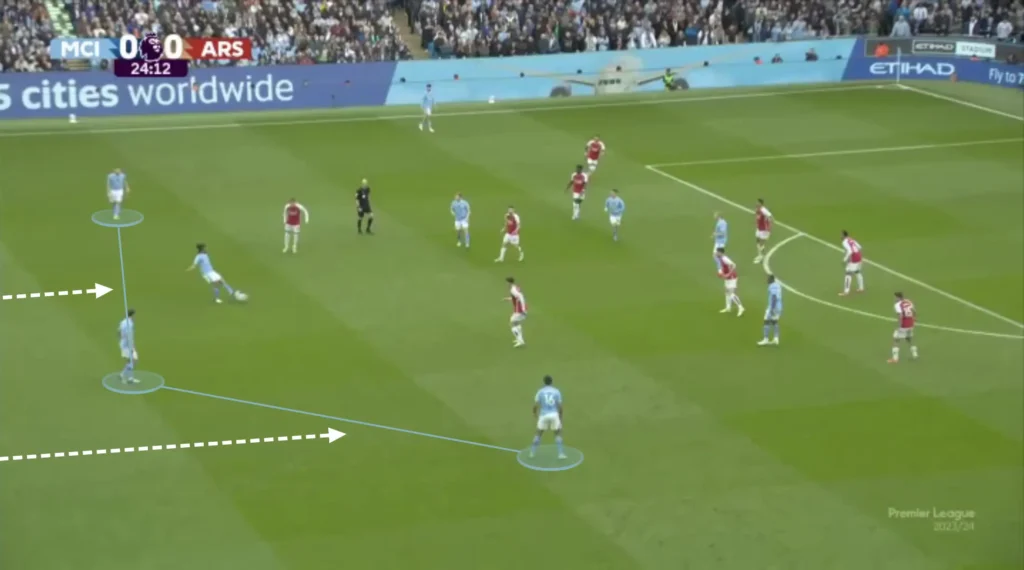
Man City could, however, rarely break down Arsenal’s compact defense, struggling to create any chances with Gvardiol and Akanji as wingers.
High press
Man City tried to press Arsenal high whenever they could and would do so in a 1-4-1-2-1-2 formation. Even though City’s front three players were numerically inferior to Arsenal’s five building players, they managed to get Arsenal to go long most of the time. Haaland would press Raya, closing the passing lane to one of the center-backs while the others came across to close the other options, which forced Raya to go long.
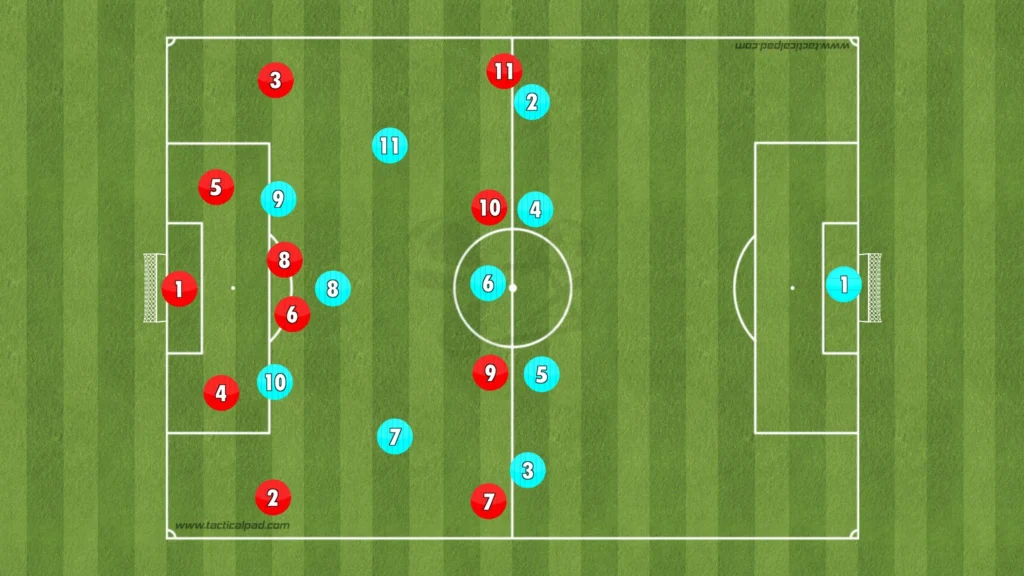
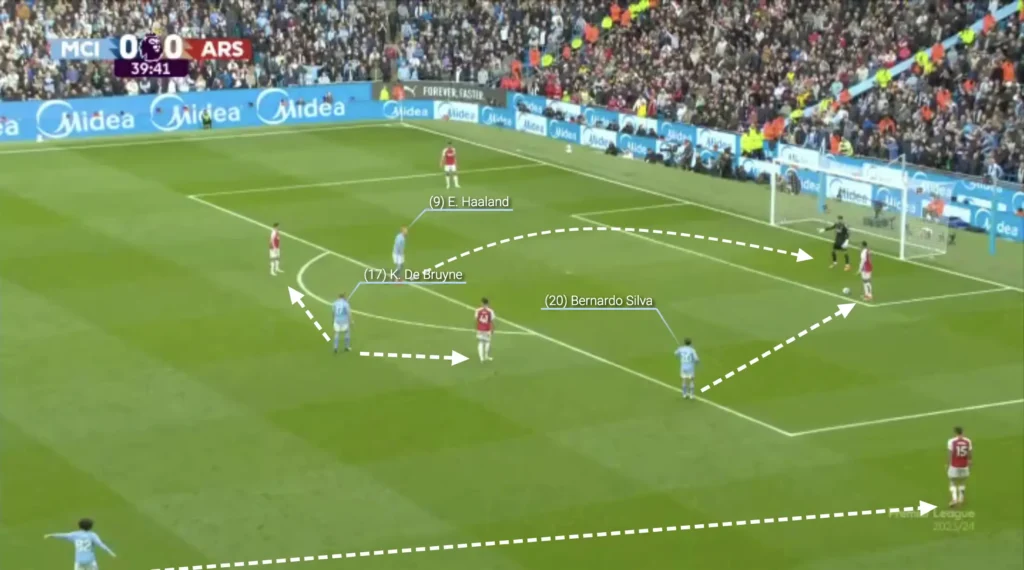
Defensive Transitions
Positioning many players centrally, creating a numerical advantage in the midfield, created good conditions in defensive transitions. Many players close to the ball after losing possession means that many players can work towards regaining possession. Guardiola’s Man City, therefore, often regained possession directly after losing it. When they won the ball, they wanted to start over and recycle the ball, not wanting to lose possession again.
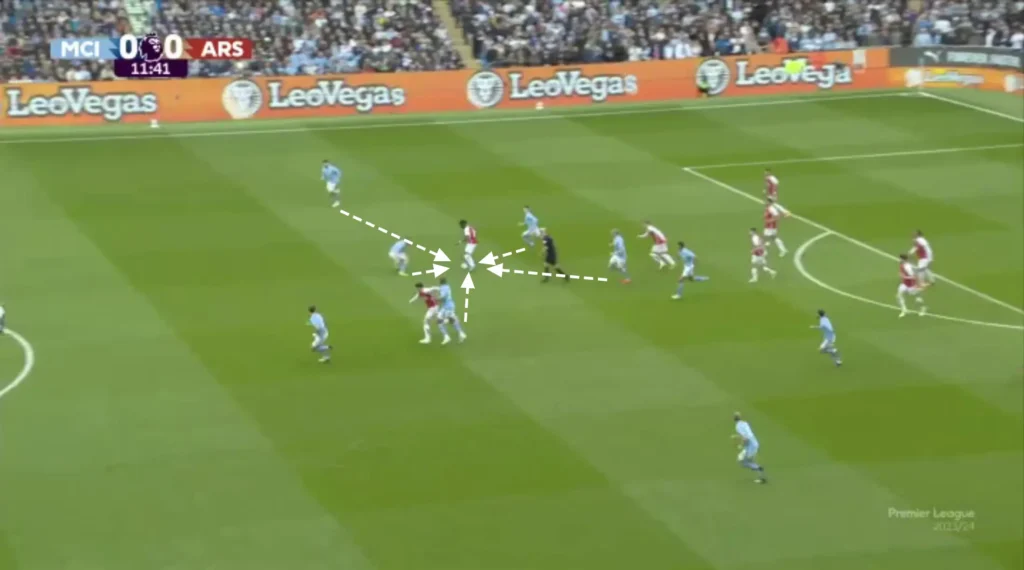
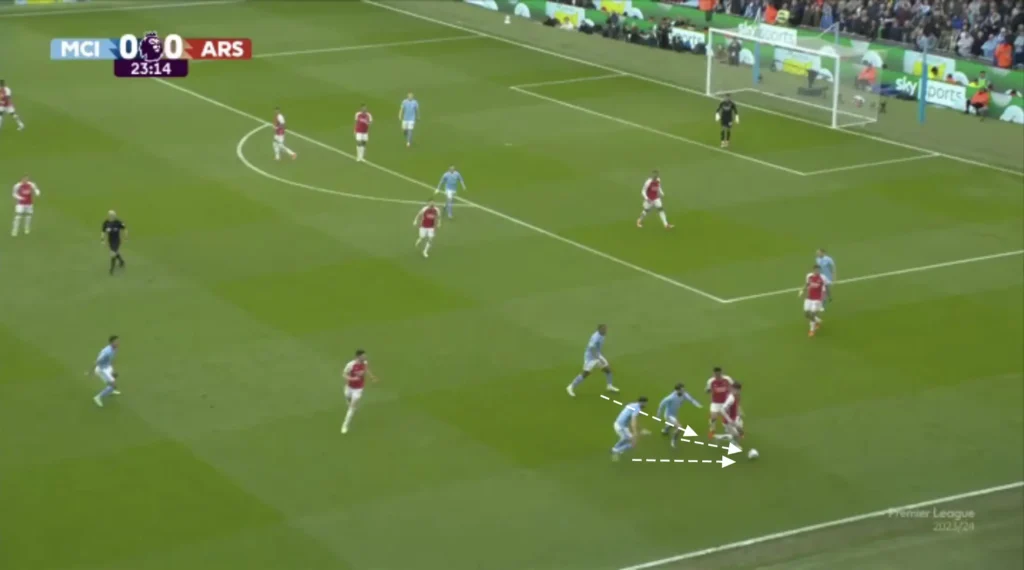
When City’s immediate counter-press did not work, they still managed to stop Arsenal’s counterattacks. Arsenal’s forward line being so low allowed many Man City players to get back and defend the attacking Arsenal players.
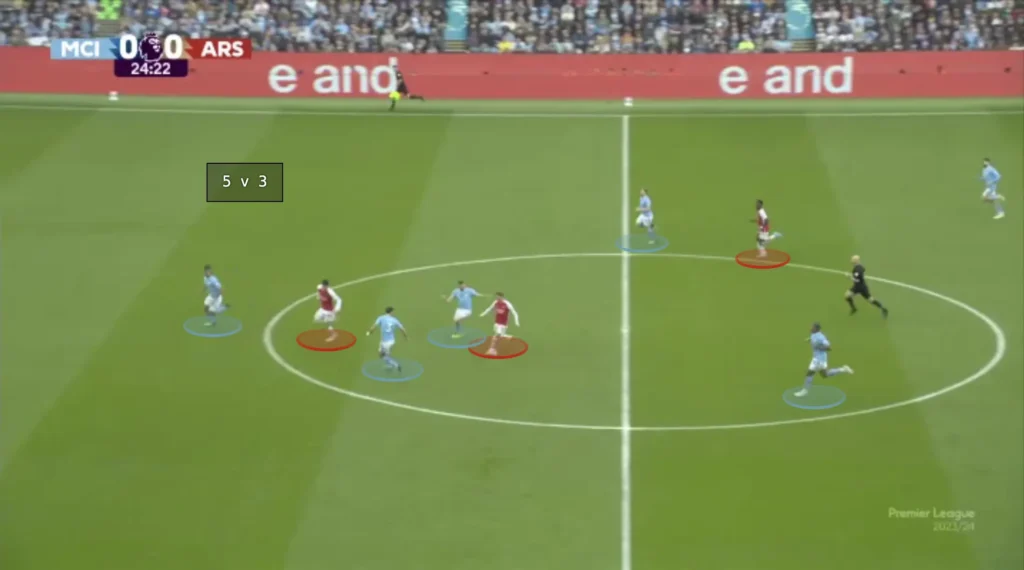
Arsenal
Build-up
In the build-up, Arsenal used a 1-4-2-2-2 formation, with Odegaard and Havertz playing as number 10:s and Gabriel Jesus and Saka playing high and wide, pinning the backline.
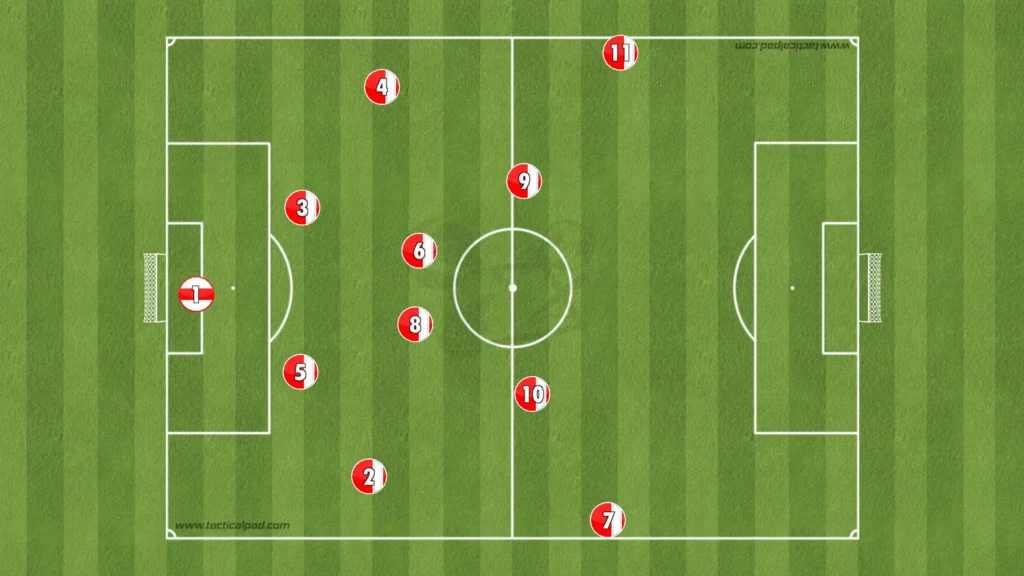
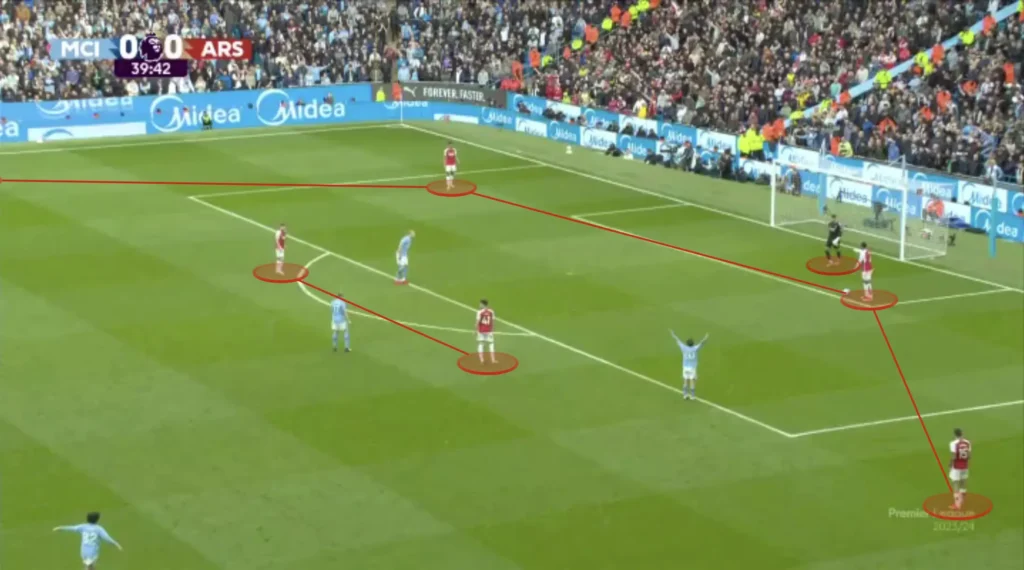
Arsenal found no success in their low build-up early on in the game and struggled to beat Man City’s press. Therefore, they decided to go long, looking to bring down second balls and begin the build-up from there. Arsenal would set up in a 1-4-3-3, aiming at Havertz, who would drop down into the midfield.
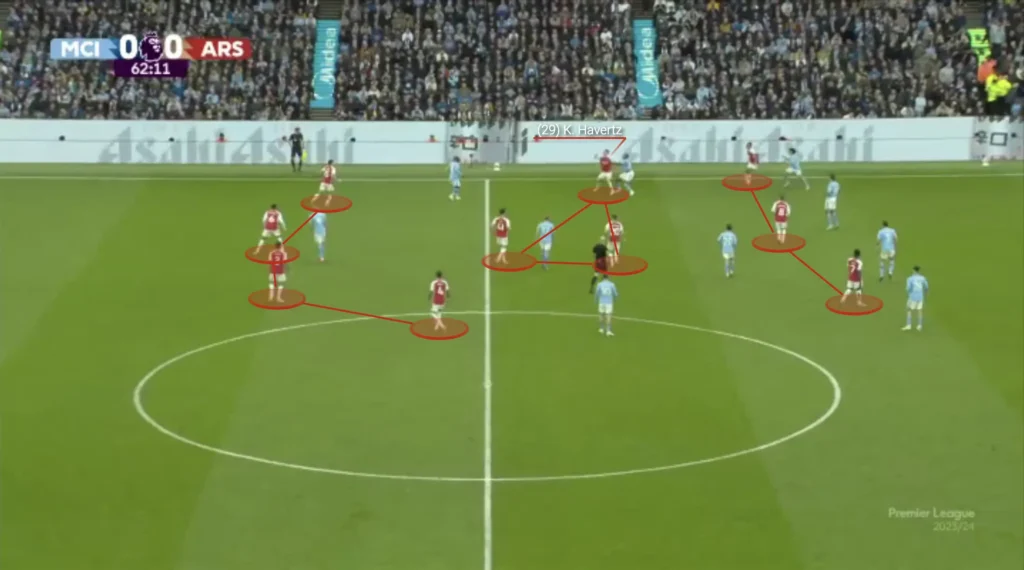
Defending
Low Press
Arsenal used a 1-4-4-2 formation when defending. They looked to set up in a mid to low-block, always trying to stay compact while closing the center, forcing Man City out wide.
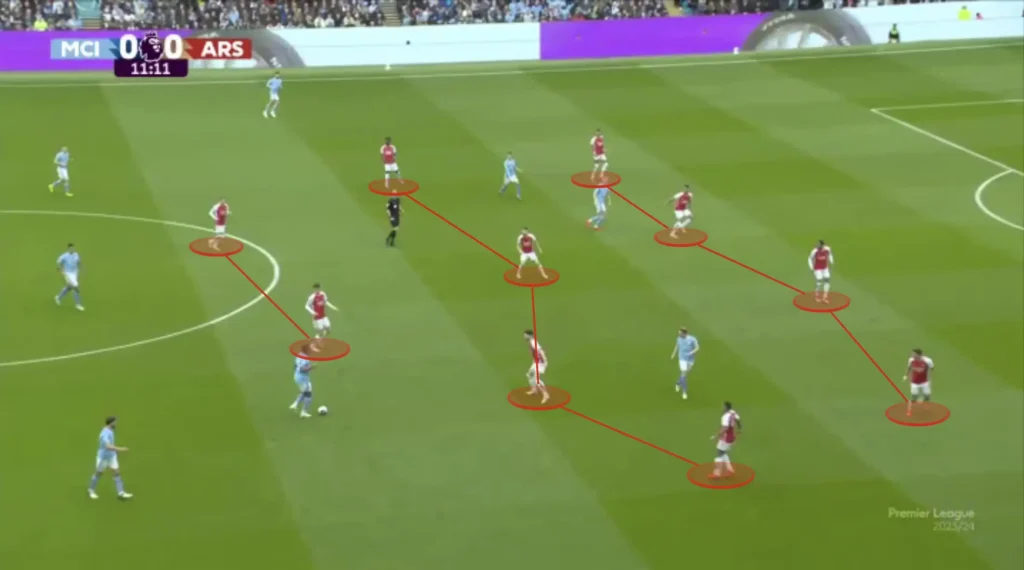
Man City pushed Arsenal back through their constant possession. Their attacking fullbacks forced Saka and Jesus to sometimes drop into the backline, creating a five or six at the back.
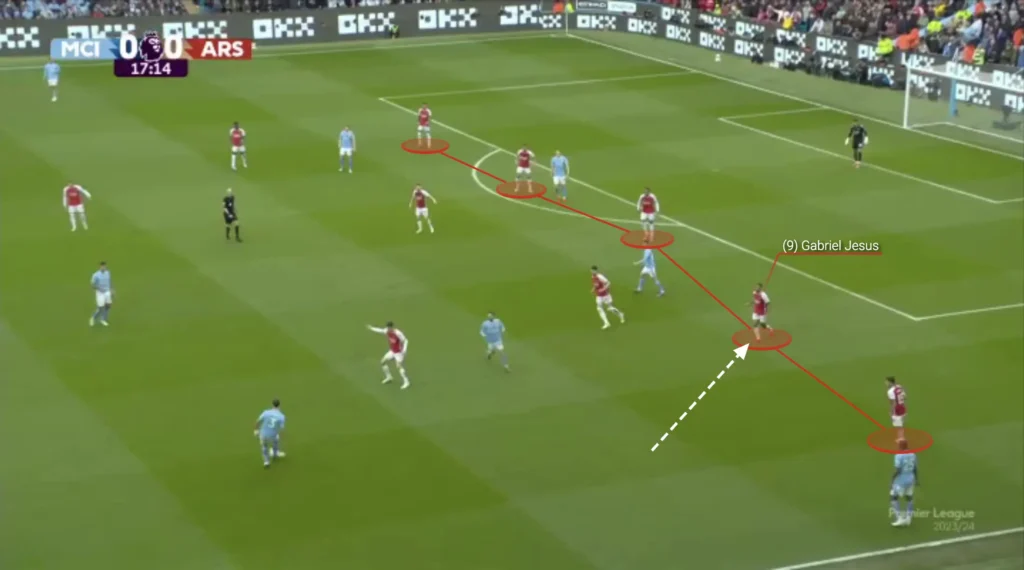
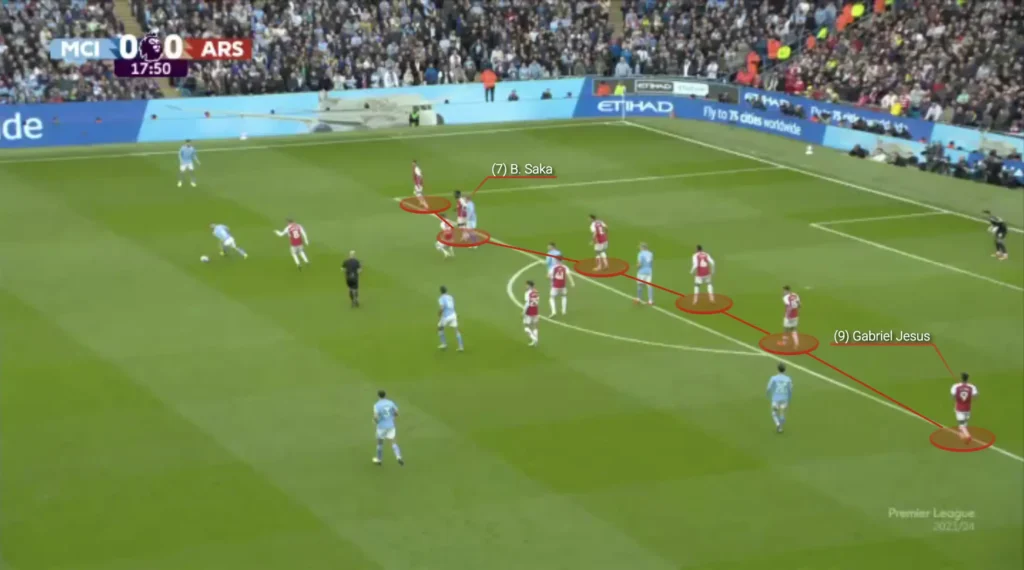
Man City struggled to break Arsenal down. This was mainly due to Arsenal’s compactness. They made the space in between the lines extremely small, never allowing Man City’s dangerous midfielders to receive the ball there.
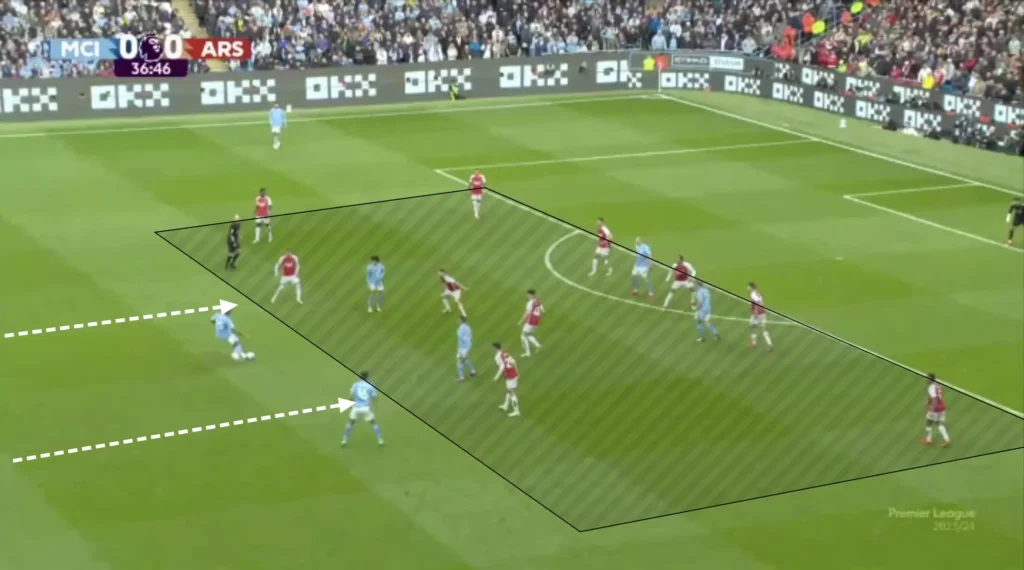
While this made Arsenal difficult to break down, it meant that they had a very long way to City’s goal. This often made their counterattacking attempts unsuccessful.
High press
Arsenal looked to press Man City whenever they could and did so successfully during the game. Saka came up into the forward line, looking to push up on the dropping Kovacic, while Jesus tucked in to help in the midfield. When Saka pressed Kovacic, Ben White followed, pushing on City’s left-back, often winning the ball.
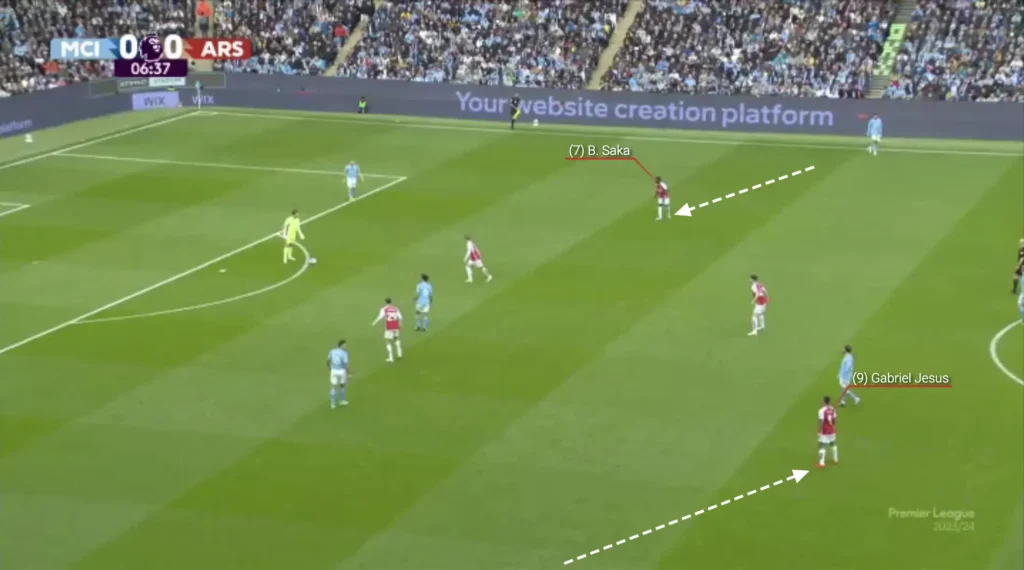
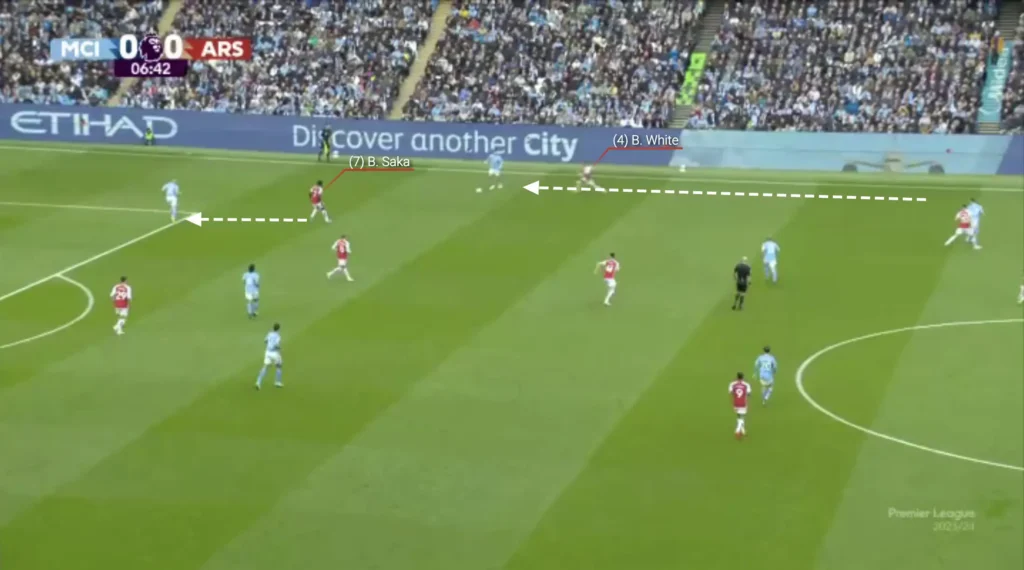
Final Thoughts
In conclusion, this tactical analysis has provided a detailed examination of the battle between Manchester City and Arsenal. Throughout the match, we witnessed a captivating display of strategic maneuvers and tactical adjustments from both sides. Manchester City’s relentless pressing and fluid attacking movements showcased their prowess under Pep Guardiola’s guidance, while Arsenal’s compact defensive shape and quick transitions demonstrated their resilience under pressure. Despite the result, both teams exhibited moments of brilliance and tactical sophistication, highlighting the evolution of modern football tactics. As the season progresses, it will be fascinating to see how these tactical approaches continue to evolve and shape the outcomes of future encounters on the pitch.
